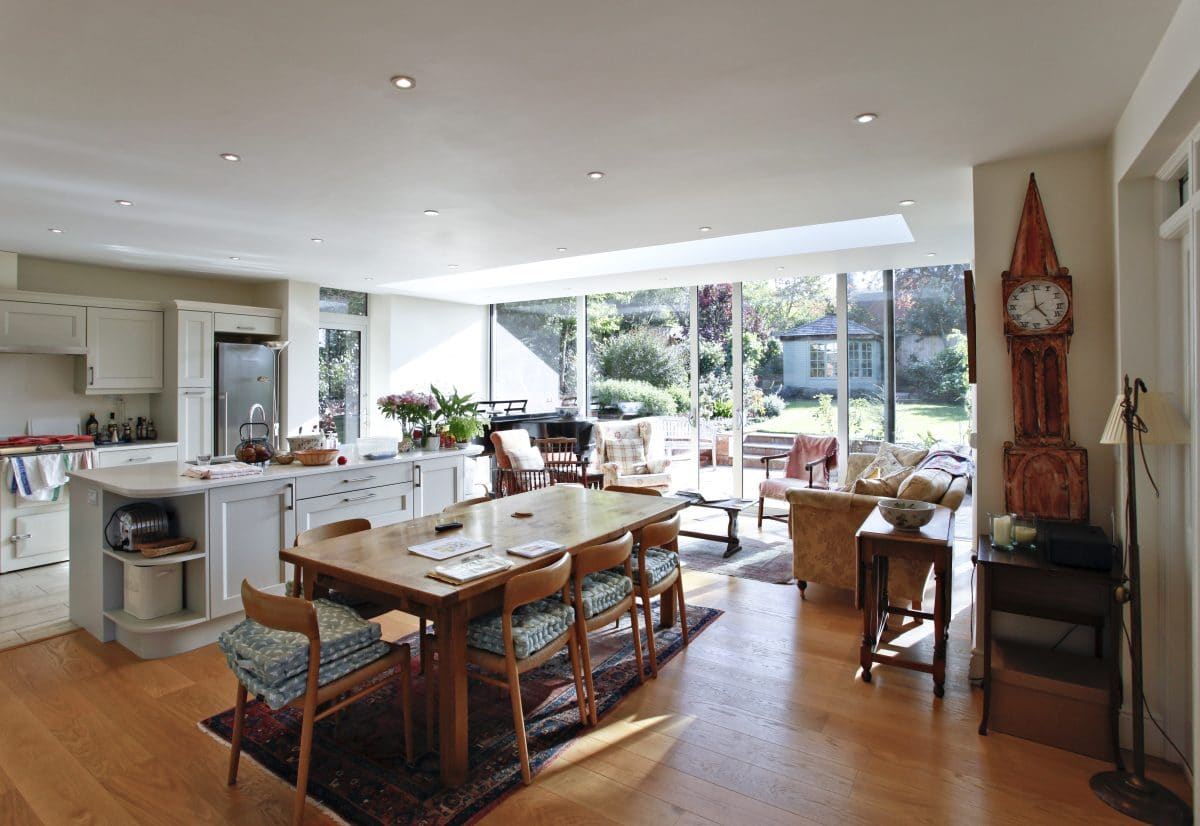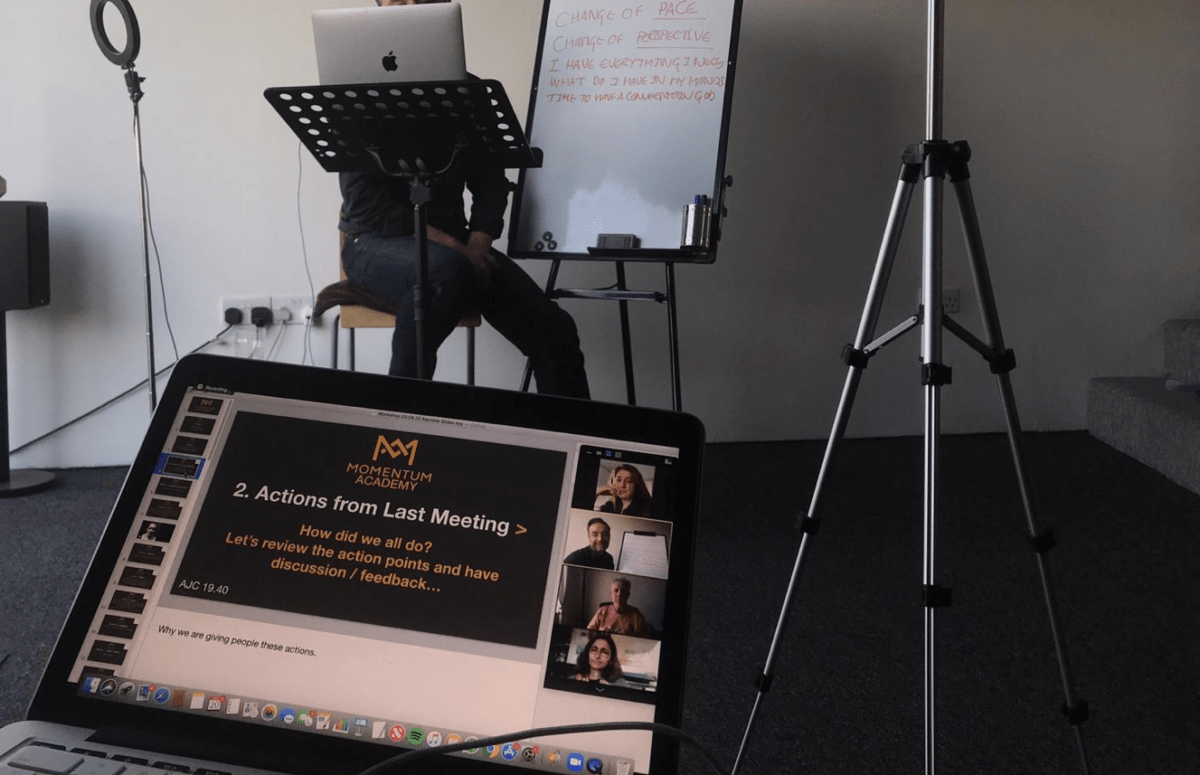I’ve always said that Communion is privileged to work on the most important spaces in our world – our homes and our churches.
Never has that statement been more true than it is at the moment.
The COVID-19 lockdown has meant that many of us are spending a lot more time in our homes than we have ever done before.
There is no doubt that this is a time of great uncertainty and worry. For many of us it is also a completely new way of living and working that is leading us to reflect and reconsider.
My sense is that this period will lead to a longer term change in the way we live and work and, by extension, what we need from our homes. It’s clear that the space in our homes will need to work harder for us than ever before. But what about beyond that?

Gardens
I think the first thing we have all realised is how important outside space is to relax, work and exercise in. This is something our ancestors understood very well. The typology of the Victorian terraced house includes a lengthy garden. The garden cities of the 1920s, which have served as a blueprint for suburban homes ever since, include sizeable garden plots. In cities, however, high rise dwellings are increasingly the norm. I wonder whether future designs of high rise buildings will include larger balconies or whether developments will have more communal external space such as winter gardens. Having said this, how to use communal space equitably has been one of the most difficult aspects of the lockdown for many people.
Inside the home, it is clear that we need shared spaces that work well for us.

Shared Mealtimes
For many families, shared mealtimes have fallen out of fashion because of the logistics of the working week. However, with parents no longer coming home from work at different times and children no longer at after-school activities, they are suddenly back. It means the dining room table is no longer just a symbol of family life, it’s also an essential practical element.
Shared mealtimes have been a time of celebration for my family and me. Since we cannot go out, we have held a series of themed nights, where we have all dressed up, put on music, shared a special meal and then watched a film. This has been really fun and created some memories – as well as some funny photos!
We have also found that, by the wonders of modern technology, we have been having meals with our daughter who is living on her own in Edinburgh. Having her face and voice at our table is surprisingly effective, and it is great to have someone else in the house.

Shared Entertainment
Shared entertainment also has a part to play. We often have our own screens we use to consume content individually. But, with more time for leisure, there’s more time to consume that content together. That means there is a need for a shared entertainment space and technology that has all the functionality of our individual devices. A single, large screen where families can stream content and access photos and videos from their personal devices. I’d also extend this to having the ability to create content – a well-lit space with recording facilities to enable families to exercise their creativity together. Or, if you are involved with work that involves lots of meetings, a semi studio space.

Shared Communication
This leads to shared communication. We are used to communicating individual-to-individual on our phones. Our new way of living has revealed how important it is for groups to communicate – for families, congregrations, social gatherings. Our individual phone and laptop screens don’t make this easy. Perhaps this shared entertainment screen / studio space will also be a place where we can gather and communicate more easily.
Individual Working and Learning Spaces
There’s no doubt the lockdown has shown us how important shared space is. It’s also revealed the vital importance of individual space. Perhaps the first thing we notice is the need for space where people can work and learn. A single desk and computer used by the whole family at different times is no longer sufficient. We each need a space of our own. It also needs to be fit-for-purpose – ergonomically designed and thoughtfully set up, even if it is a space that’s temporary and also has other functions in the household, such as the dining room table.

Individual Leisure Space
In the same way as we need individual spaces in which to work and learn, never has a space where we can retreat to and relax in on our own been more important. Whether it’s a den, a home gym, a shed or a sewing room, we now know those spaces aren’t a luxury, they’re a necessity. We also all need a quiet place to take private calls away from the whirlwind of our new domestic lives.
Shared Values
Perhaps one of the biggest changes we are seeing is the importance of having shared values. With everyone spending so much time in the same space, it’s clear that everyone has a part to play and everyone has to take responsibility. Tasks such as meal preparation, cleaning, tidying up, making and re-making spaces (such as turning the dining room table back from a workspace to an eating place) need to be shared out rather than falling on one member of the household. I think this also enables diversity in the home. Since our kids are with us much more, we have found it very enjoyable to ask them what food they want to eat and make. This continues to lead us into new mini adventures.
It is perhaps the sense of shared values and shared spaces that will be the biggest difference we see post-lockdown. Because, if nothing else, this period is an absolute reminder of the importance of the people and the spaces at the heart of our lives.

Local Shelter and Global Reach
One of my favourite quotes is from the priest and anthropologist, Gerald Arbuckle. When talking about how to find ‘newness’ rather than novelty, he says the key is ‘not leaving the tradition but driving to its heart.’
The ability to use technology to reach beyond our walls and into our new global village has been what has prevented our homes becoming prisons.
But, at the same time, I think the reason the phrase ‘stay home, stay safe’ has resonated with so many people is because it taps into our most primitive sense of what a home is – somewhere that offers shelter and protection. After all, this is precisely what the very earliest form of dwelling, a cave, offered. I think this sense also explains why so many of us have felt the primeval pull of our homes, shelter, protection and family so strongly at the moment.
This hasn’t been our first pandemic and I doubt it will be our last. But one thing is for certain: stuff will be different from now on in. Starting to think what our buildings will look like in this new world will be an adventure for us all.
If you want to reach out via social media to discuss what you have found the most important asset or difficulty of your home, we would love to hear from you. One of the things we are looking into at the moment is what our clients are finding out from their projects during this period. Their insights are fascinating and their thoughts will become the seeds of our collective designs for this new world.



